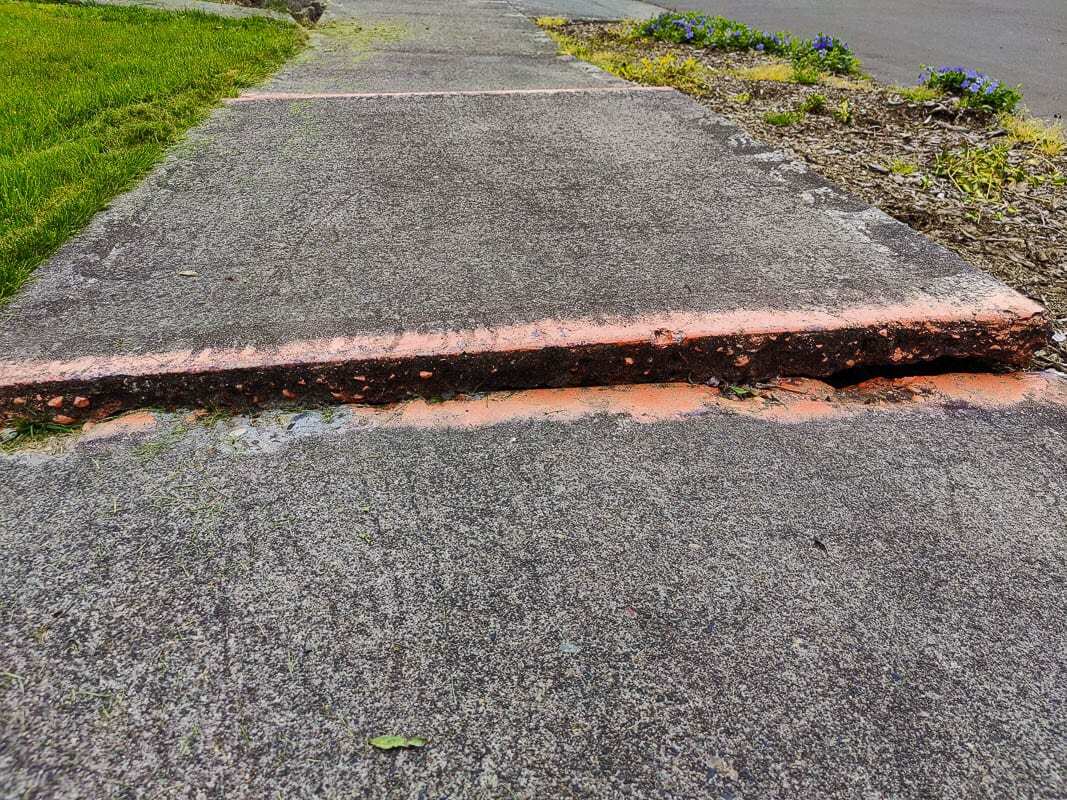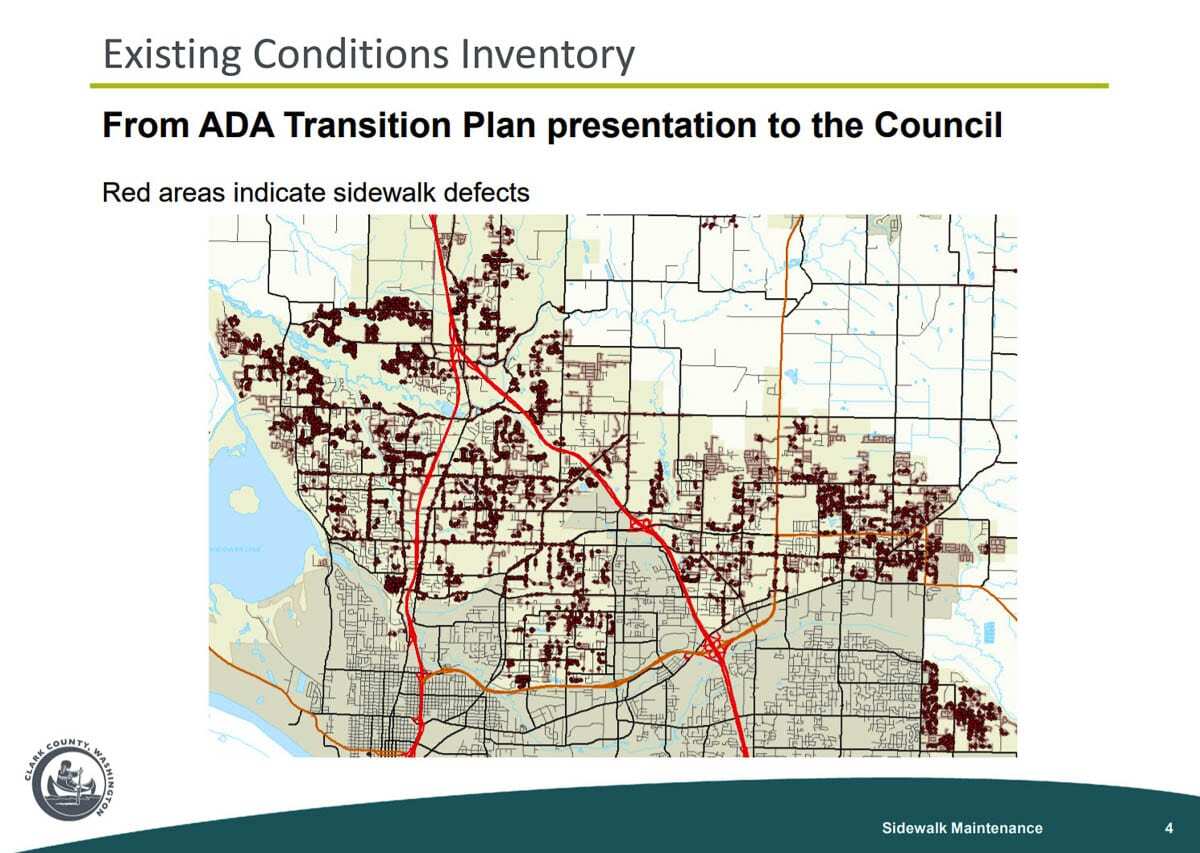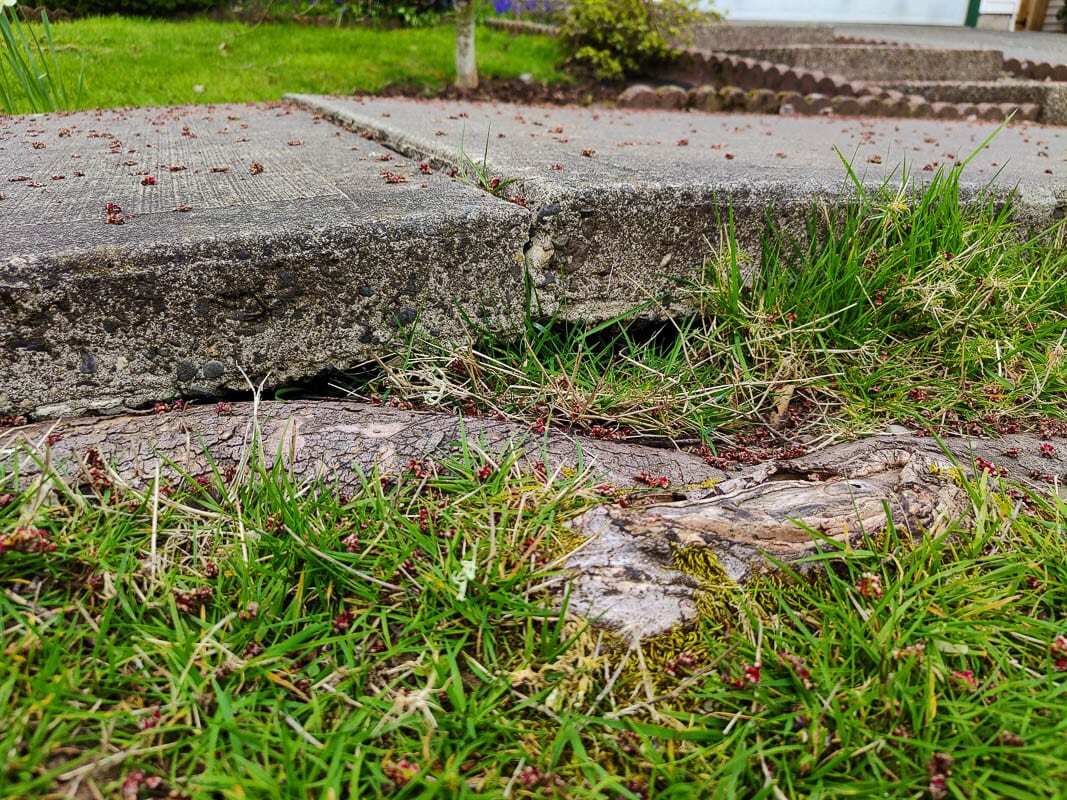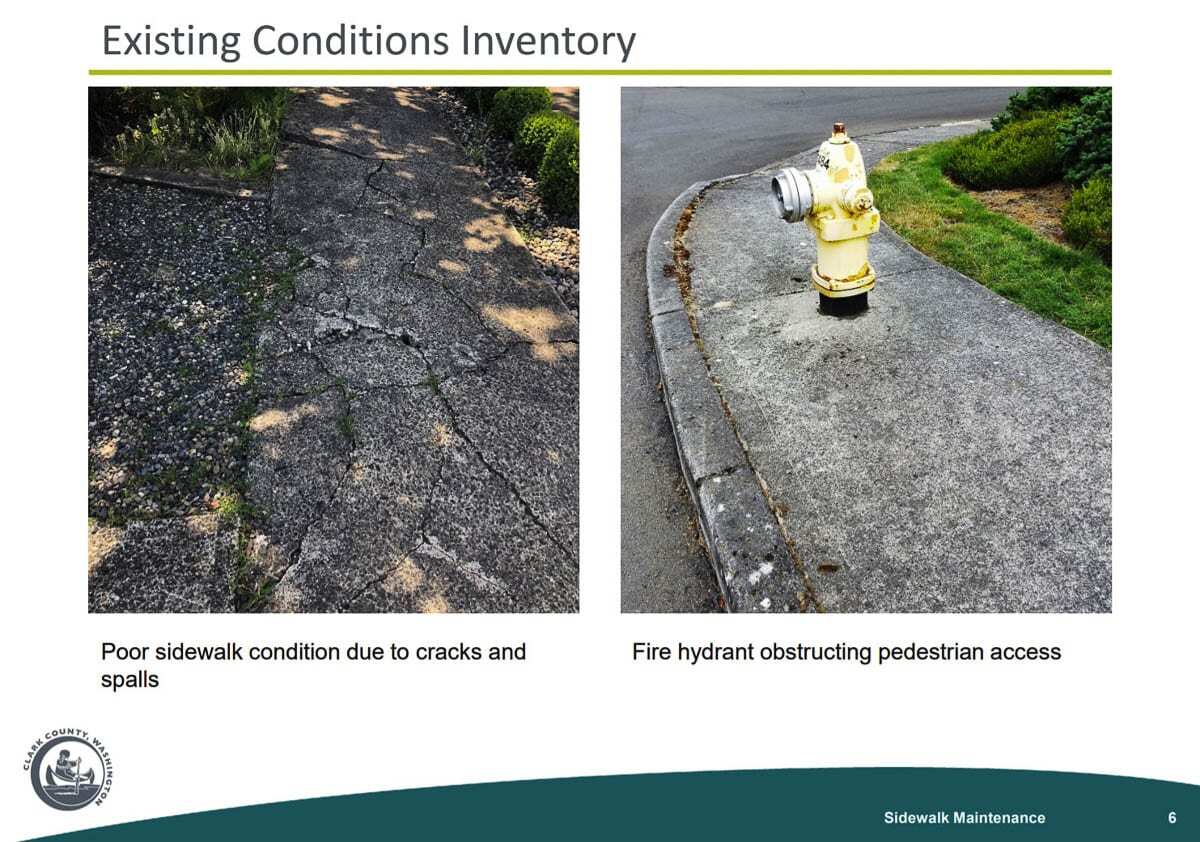Property owners are usually responsible for the repairs which can run into the tens of thousands of dollars
CLARK COUNTY — Sidewalks are likely something most people don’t think much about. At least until you trip over a lifted section, or give your child an abrupt bounce when hitting a bump with your stroller.

Workers within Clark County Public Works have spent well over a year surveying thousands of miles of sidewalks in the unincorporated areas, to get a sense of how much work needs to be done to repair sidewalks that are faulty.
Short answer: it’s a lot.
“We have identified over 7,000 locations around the county that need either improvements or replacement for sidewalks,” said Public Works Director Ahmad Qayoumi at a work session Wednesday morning.
Karen Carlie, a preservation manager with Public Works, said there were 95 sections of sidewalk that had been identified with a three inch or greater vertical defect, meaning one panel was at least three inches higher than the adjoining one, while more than 800 others had a lift of between one-half and three inches.

“What we’re hearing from the people that are using mobility devices, in wheelchairs, is that a half an inch lip is just as hazardous as a three inch lip for many of the devices,” Carlie told the council. “Because with the small wheels that they have, the lip can cause mobility devices to come to a sudden halt, which can launch the person out of the chair, or out of the device.”
And that has increasingly led to lawsuits and settlements from the county.
Between 2012 and 2019, the county paid out $76,000 in claims for injuries caused by faulty sidewalks. That number has risen steadily in recent years, and could rise sharply over the next five years, said Transportation Division Manager Rob Klug.
“We have a claim that was just submitted here last week that is for $200,000,” Klug added. “We don’t have enough data to draw any conclusions at this point other than showing that the trends are likely to increase over time.”
Most new sidewalks are built by developers, who are required to add them as part of any residential or commercial development. Recent changes to county code recommend planting trees next to sidewalks that have roots which grow down, rather than out, but costly fixes remain for thousands of miles of sidewalks.
Councilor Gary Medvigy called many of the issues “self inflicted wounds” brought about by shoddy construction, the use of vegetation that would undermine the concrete, or just lack of foresight in sometimes placing things such as fire hydrants within the public right-of-way.
“Anyone that builds it needs to be responsible to build it to a quality standard where it’s going to last,” he added. “And they should be on the hook to pay for it.”
While that may not be feasible under existing law, Medvigy said the county should at least begin to immediately address design standards “so we don’t keep adding to the thousands of problems we’ve got.”
Those problems include mailboxes on sidewalks limiting space for wheelchair usage, or even fire hydrants right in the middle of some sidewalks.
By far the largest problem, however, are cracks and lifted sidewalk panels leading to hazardous conditions.

Under existing county code, responsibility for repairing faulty sidewalks generally falls to the owner of the adjacent property. They can also be liable for damages caused by those sidewalks, such as personal injury, though a recent court ruling in Tacoma could make the liability section difficult to enforce.
Councilor Karen Bowerman agreed with Medvigy and went a step further adding that “when the county has caused the defect, in essence, by its former fee policies, or other reasons, I believe … the county should pay and take care of the problem.”
Figuring out how much that might cost would be a difficult equation. A typical sidewalk repair requires replacing between two and five panels, at a cost of between $1,200 and $3,600. If a tree needs to be removed, it can be upwards of $10,000.
If the county were to create some sort of cost-sharing option, Carlie said, the cost could be slightly less if they could get a contractor to do a number of sidewalk sections within the same timeframe.

At the very least, many of the council members indicated they would support free permitting for people seeking to fix a sidewalk near their home.
“As long as they’re doing what is required, in partnership here, having a no cost permit makes a huge amount of sense to me,” said Bowerman.
Council Chair Eileen Quiring O’Brien said she would prefer to see those policies clarified before Public Works starts sending out thousands of letters to property owners advising them to fix the sidewalks near their house.
“I think we need to take time to actually discuss these questions one by one,” said Quiring. “Because I’m sure there are unintended consequences all over the place.”
One of those, Klug said, might be changes to the setback between the streets and sidewalks. While that would give trees more space to grow, it would have a ripple effect on most developments, potentially greatly reducing the developable land.
“Believe me, I see the complexity,” he said. “I don’t want to change the world to get a good sidewalk.”
Klug said he anticipated this would be the first of several such discussions, with future work sessions focused on specific elements of the problem and potential solutions, plus the price tag attached to them.




